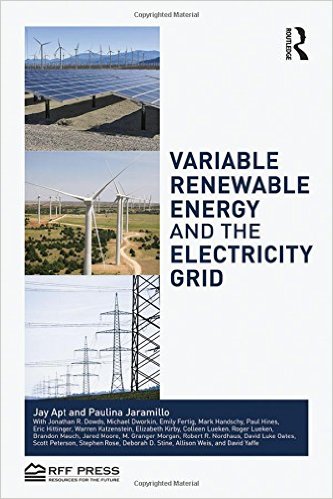 [内容简介]
[内容简介]
The integration of renewable energy resources into the electricity grid presents an important challenge. This book provides a review and analysis of the technical and policy options available for managing variable energy resources such as wind and solar power. As well as being of value to government and industry policy-makers and planners, the volume also provides a single source for scientists and engineers of the technical knowledge gained during the 4-year RenewElec (renewable electricity) project at Carnegie Mellon University, the University of Vermont, Vermont Law School, and the Van Ness Feldman environmental law firm.
The first part of the book discusses the options for large scale integration of variable electric power generation, including issues of predictability, variability, and efficiency. The second part presents the scientific findings of the project. In the final part, the authors undertake a critical review of major quantitative regional and national wind integration studies in the United States. Based on comparisons among these studies, they suggest areas where improvements in methods are warranted in future studies, areas where additional research is needed to facilitate future improvements in wind integration studies and how the research can be put into practice.
[目录]
Executive Summary
Part 1: Technical and Policy Options
1. Overview
2. Variability and its Prediction
3. Strategies to Reduce or Manage Wind and Solar Variability
4. Improved Planning for Renewable Energy Capacity Expansion
5. New Regulations, Rate Structures, and Standards to Support Variable Energy Resources
6. Policies to Manage Variable Generation at Increased Renewable Contribution
Part 2: Scientific Findings
7. The Social Costs and Benefits of Wind Energy: Case Study in the PJM Interconnection
8. Characteristics of Wind, Solar Photovoltaic, and Solar Thermal Power
9. Forecast Error Characteristics of Wind and of Load
10. Day-Ahead Wind Reserve Requirements
11. Year-To-Year Variability in Wind Power
12. Reduction of Wind Power Variability through Geographic Diversity
13. Cycling and Ramping of Fossil Plants, and Reduced Energy Payments
14. Storage to Smooth Variability
A. Small-Scale Storage
B. Economics of Grid Storage:
i. Storage in the Largest Electricity Market, PJM
ii. Pumped Hydroelectric Storage in Portugal and Norway
iii. Compressed Air Energy Storage
iv. Plug-In Hybrid Electric Vehicle (PHEV) Storage
v. Smart PHEV Charging
15. The Cost-Effectiveness of Dynamically Limiting Wind Turbines for Secondary Frequency Regulation Capacity
16. Quantifying the Hurricane Risk to Offshore Wind Power
Part 3: Review of Large-Scale Wind Integration Studies
17. A Critical Review of Large-Scale Wind Integration Studies in the United States

 新书报道
新书报道